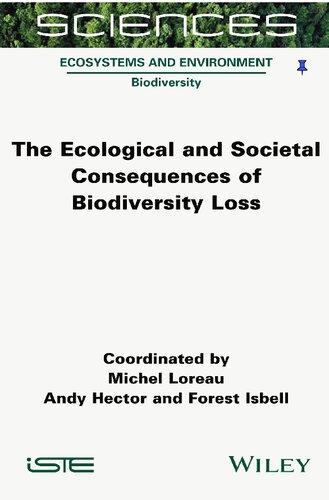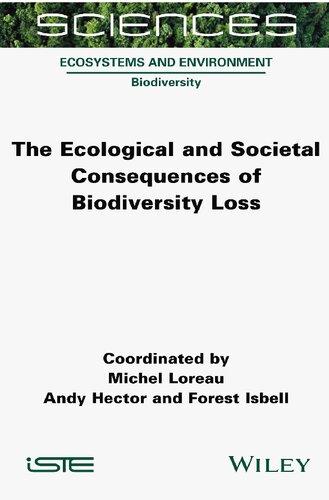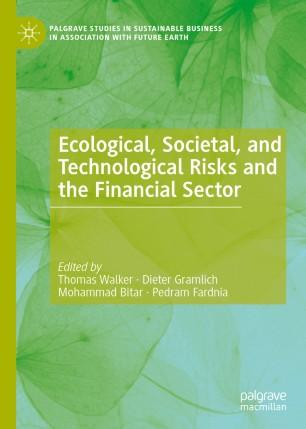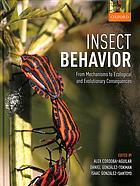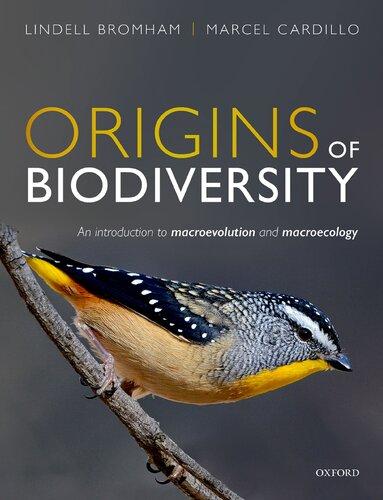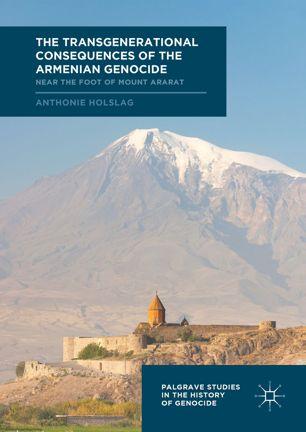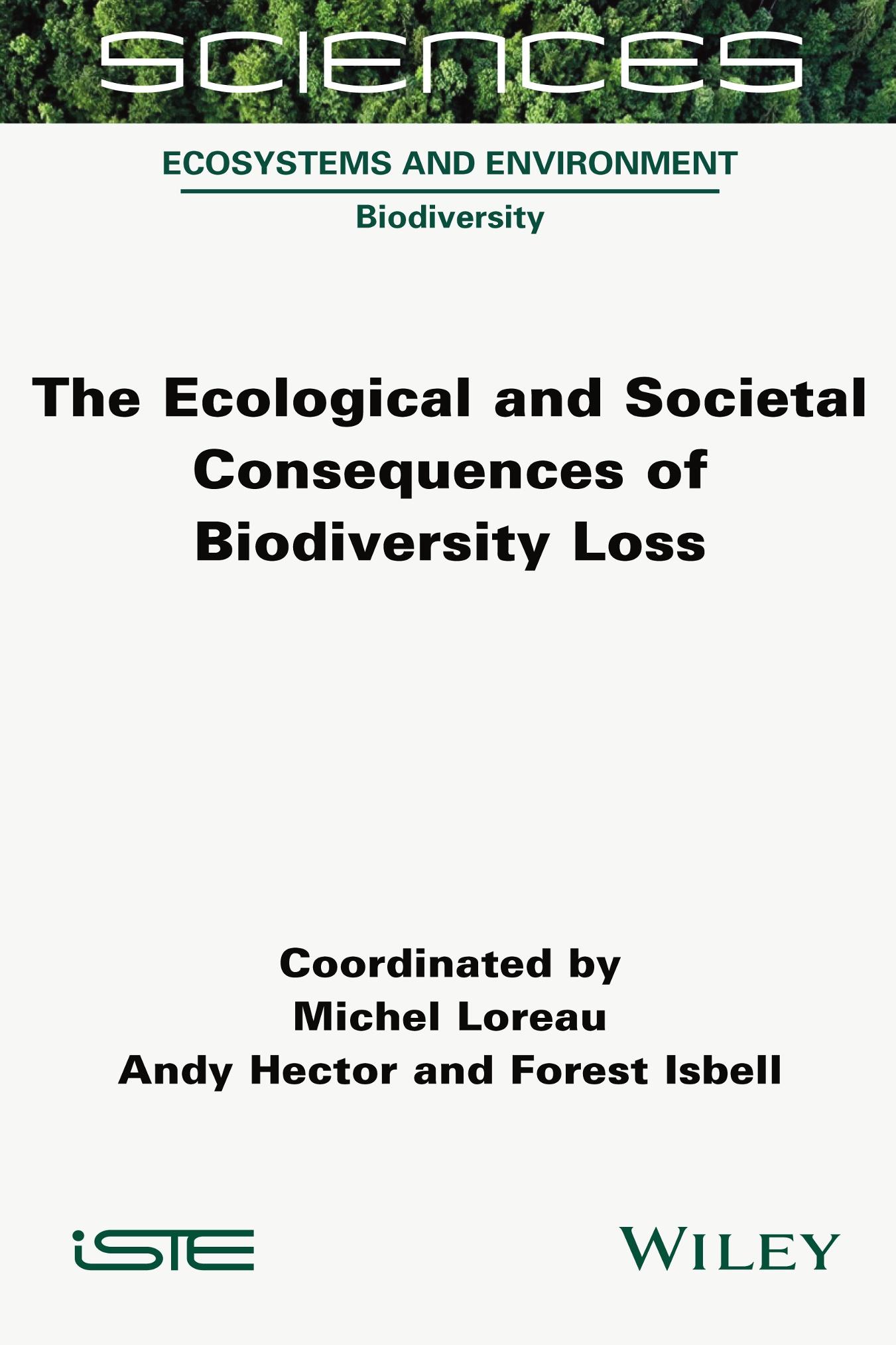The
and Societal Consequences of Biodiversity Loss 1st Edition Forest Isbell
Visit to download the full and correct content document: https://ebookmass.com/product/the-ecological-and-societal-consequences-of-biodiver sity-loss-1st-edition-forest-isbell-2/
More products digital (pdf, epub, mobi) instant download maybe you interests ...
The Ecological and Societal Consequences of Biodiversity Loss 1st Edition Forest Isbell
https://ebookmass.com/product/the-ecological-and-societalconsequences-of-biodiversity-loss-1st-edition-forest-isbell/
Ecological, Societal, and Technological Risks and the Financial Sector 1st ed. Edition Thomas Walker
https://ebookmass.com/product/ecological-societal-andtechnological-risks-and-the-financial-sector-1st-ed-editionthomas-walker/
Insect Behavior: From Mechanisms to Ecological and Evolutionary Consequences First Edition, Impression 1. Edition Alex Córdoba-Aguilar
https://ebookmass.com/product/insect-behavior-from-mechanisms-toecological-and-evolutionary-consequences-first-editionimpression-1-edition-alex-cordoba-aguilar/
Ranunculales Medicinal Plants: Biodiversity, Chemodiversity and Pharmacotherapy Da-Cheng Hao
https://ebookmass.com/product/ranunculales-medicinal-plantsbiodiversity-chemodiversity-and-pharmacotherapy-da-cheng-hao/
Intended Consequences Hemant Taneja
https://ebookmass.com/product/intended-consequences-hemanttaneja/
Origins of Biodiversity: An Introduction to Macroevolution and Macroecology 1st Edition Lindell Bromham
https://ebookmass.com/product/origins-of-biodiversity-anintroduction-to-macroevolution-and-macroecology-1st-editionlindell-bromham/
Nothing But The Truth: Stories of Crime, Guilt and the Loss of Innocence 1st Edition The Secret Barrister
https://ebookmass.com/product/nothing-but-the-truth-stories-ofcrime-guilt-and-the-loss-of-innocence-1st-edition-the-secretbarrister/
The Transgenerational Consequences of the Armenian Genocide 1st ed. Edition Anthonie Holslag
https://ebookmass.com/product/the-transgenerational-consequencesof-the-armenian-genocide-1st-ed-edition-anthonie-holslag/
Feeling Unreal: Depersonalization and the Loss of the Self 2nd Edition Daphne Simeon
https://ebookmass.com/product/feeling-unreal-depersonalizationand-the-loss-of-the-self-2nd-edition-daphne-simeon/
The Ecological and Societal Consequences of Biodiversity Loss
SCIENCES
Ecosystems and Environment,
Field Directors – Dominique Joly and Françoise Gaill
Biodiversity, Subject Head – Fabienne Aujard
The Ecological and Societal Consequences of Biodiversity Loss
Coordinated by Michel Loreau
Andy Hector Forest Isbell
First published 2022 in Great Britain and the United States by ISTE Ltd and John Wiley & Sons, Inc.
Apart from any fair dealing for the purposes of research or private study, or criticism or review, as permitted under the Copyright, Designs and Patents Act 1988, this publication may only be reproduced, stored or transmitted, in any form or by any means, with the prior permission in writing of the publishers, or in the case of reprographic reproduction in accordance with the terms and licenses issued by the CLA. Enquiries concerning reproduction outside these terms should be sent to the publishers at the undermentioned address:
ISTE Ltd
John Wiley & Sons, Inc.
27-37 St George’s Road 111 River Street London SW19 4EU Hoboken, NJ 07030 UK USA
www.iste.co.uk
www.wiley.com
© ISTE Ltd 2022
The rights of Michel Loreau, Andy Hector and Forest Isbell to be identified as the authors of this work have been asserted by them in accordance with the Copyright, Designs and Patents Act 1988.
Any opinions, findings, and conclusions or recommendations expressed in this material are those of the author(s), contributor(s) or editor(s) and do not necessarily reflect the views of ISTE Group.
Library of Congress Control Number: 2021950400
British Library Cataloguing-in-Publication Data
A CIP record for this book is available from the British Library
ISBN 978-1-78945-072-9
ERC code:
LS8 Ecology, Evolution and Environmental Biology
LS8_1 Ecosystem and community ecology, macroecology
LS8_2 Biodiversity, conservation biology, conservation genetics
1.1.
2.1.
2.3.
2.4.
2.4.1.
2.5.
2.4.2.
2.8.
2.9.
Chapter
Amelia A. WOLF, Sarah K. ORTIZ, and Chase J. RAKOWSKI
3.1.
3.1.5.
3.2.
3.3.
3.4.
3.5.
3.6.
Chapter
Shaopeng WANG
4.1.
4.2.
4.3.
4.4.
4.5.
4.6.
Chapter 5. Experimental Evidence for How Biodiversity Affects
Ecosystem Functioning
Mary I. O’CONNOR, Joey R. BERNHARDT, Keila STARK, Jacob USINOWICZ, and Matthew A. WHALEN
5.1. The role of experiments ............................
5.1.1. The experiment that launched a thousand experiments
5.1.2. How do we gain knowledge from experiments?
5.2. BEF experiments as tests of theory
5.2.1. Diversity as a driver of change in ecosystem function
5.2.2. Evidence for selection and complementarity
5.2.3. Experimental evidence for key assumptions of BEF theory
5.2.4. Testing for diversity effects under broader abiotic and biotic
5.2.5.
5.3. Experiments that extend
5.3.1.
5.3.2. Experiments that bridge BEF and modern coexistence theory (MCT) ...................................
5.3.3. Experimental evidence for effects of biodiversity on
5.4.
5.5.
Chapter 6. Biodiversity and Ecosystem Functioning in Observational Analyses
Laura E. DEE, Kaitlin KIMMEL, and Meghan HAYDEN
6.1. Introduction
6.2. A historical perspective: returning
6.3. Benefits of observational
6.4. The challenge of causal inference in observational studies
6.5. Observational studies: results and evidence to date
6.5.1. Across dimensions of biodiversity
6.5.2.
6.5.3.
6.5.4. Summary of
viii The Ecological and Societal Consequences of Biodiversity Loss
6.6. Reviewing study design to date: how are studies analyzing
6.7.
6.8.
6.9.
Part
Chapter 7. Biodiversity and Ecosystem Stability: New
7.1.
7.2.
7.3.
7.4.
7.5.
7.6.
7.7.
Chapter 8. What Do Biodiversity Experiments Tell Us About Biodiversity and Ecological
Lin
JIANG and Qianna XU
8.1.
8.2.
8.3.
8.4. The relationships between biodiversity and temporal
8.4.1. Grassland
8.4.2.
8.4.3. Aquatic
8.4.4.
8.4.5. How general are the effects of species diversity on temporal stability?
8.4.6. Other dimensions of biodiversity
8.5. The relationships between biodiversity and resistance/resilience
8.6. The relevance of biodiversity experiments to real-world ecosystems
8.7. Conclusion ....................................
8.8.
Chapter 9. Biodiversity and Temporal Stability of Naturally Assembled Ecosystems Across Spatial Scales in a Changing World ...............................
Yann HAUTIER and
Fons VAN
DER PLAS
9.1.
9.2. Biodiversity–stability
9.3. Global change drivers and biodiversity–stability relationships
9.4.
9.5.
Chapter 10. Biodiversity and Ecosystem Services in Managed Ecosystems
Bernhard SCHMID and Christian SCHÖB
10.1.
10.2.
10.3.
10.4.1.
10.5.
10.5.1.
10.5.3.
10.6.
Chapter 11. Biodiversity and Human Health: On the Necessity of Combining Ecology and Public Health
Jean-François GUÉGAN, Benjamin ROCHE, and Serge MORAND
11.1. Introduction
11.2. Microbial biodiversity is a key component of ecosystems
11.3. The linkages between biodiversity and human infectious diseases
11.4. The evolution of human society is punctuated by epidemiological phases................................
11.5. The new ecology and evolution of zoonotic and sapronotic establishment in the Anthropocene .........................
11.6. The process of globalization of human infectious diseases
11.7. A livestock-dominated planet ........................
11.8. Conclusion
11.9.
Chapter
12.1.
Chapter
Akira S. MORI, Takehiro SASAKI, Maiko KAGAMI, Takeshi MIKI, and Moriaki YASUHARA
13.2. Vulnerability and responses of biodiversity and ecosystem functioning to the changing climate in different biomes
13.3. Societal and political challenges to these twin crises and their interlinkages
13.4. The potential of biodiversity to cope with the changing climate
13.5.
13.6.
13.7.
Chapter 14. Feedbacks Between Biodiversity and Society ......
Kirsten
HENDERSON
14.1.
14.4.
Chapter 15. Protecting and
15.1.
15.2.
The Ecological and Societal Consequences of Biodiversity Loss
15.2.4. Does protecting biodiversity also protect ecosystem services? ......................................
15.2.5. What are the limitations of protected areas?
15.3. Restoring biodiversity and ecosystems by reversing degradation
15.3.1. What is restoration and why is it needed?
15.3.2. What global targets have been established for restoration?
15.3.3. How extensive and effective is restoration?
15.3.4. Increasing the diversity of restorations can increase their efficacy ....................................
15.3.5. What are the limitations of restoration?
15.4. Looking ahead .................................
15.5. Conclusion ...................................
15.6. Acknowledgements
15.7.
Introduction The Ecological and Societal Consequences of Biodiversity Loss
Michel LOREAU1, Andy HECTOR2, and Forest ISBELL3
1 Theoretical and Experimental Ecology Station, CNRS, Moulis, France
2 University of Oxford, UK
3 University of Minnesota, St. Paul, USA
One of the distinctive and fascinating features of ecological systems is their extraordinary complexity. An ecosystem is often composed of thousands of different species that interact in myriad ways at the scale of a single hectare. Each species is composed of many individuals that vary due to differences in their genetics and their particular experience of their local environment. These complex local systems are strongly connected to each other, and aggregate into larger and larger entities, from the landscape scale to that of the entire biosphere, where it becomes evident that they exert a major influence on the physical and chemical properties of our planet. How can such enormously complex systems be studied?
During the second half of the 20th century, two increasingly divergent approaches to ecological systems developed within ecology, which have gradually led to two largely distinct disciplines, community ecology and ecosystem ecology. A community is defined broadly as a set of species that live together in some place. The focus in community ecology has traditionally been on species diversity: what exogenous and endogenous forces lead to more or less diverse communities? How
The Ecological and Societal Consequences of Biodiversity Loss, coordinated by Michel LOREAU, Andy HECTOR, and Forest ISBELL. © ISTE Ltd 2022.
do species interactions constrain the number of species that can coexist? What patterns emerge from these interactions? An ecosystem is the entire system of biotic and abiotic components that interact in some place. The ecosystem concept is broader than the community concept because it includes a wide range of biological, physical, and chemical processes that connect organisms and their environment. But the focus in ecosystem ecology has traditionally been on the overall functioning of ecosystems as distinct entities: how is energy captured, transferred, and ultimately dissipated in different ecosystems? How are limiting nutrients recycled, thereby ensuring the renewal of the material elements necessary for growth? What factors and processes control energy and material flows, from local to global scales?
In a sense, community ecology provides a microscopic perspective on ecosystems because it analyzes their parts, while ecosystem ecology provides a macroscopic perspective on the same systems because it studies them as a whole. The distinction between micro- and macroscopic, however, does not necessarily apply to the spatial scales considered by the two disciplines. Although much of community ecology does consider species interactions at small scales, a growing fringe, known as macroecology, considers patterns of species diversity and species distributions at vast spatial scales. The focus on species – species distributions, species diversity, species interactions – is more central to the community approach than the spatial scale considered. Similarly, ecosystem ecology studies the fluxes of energy and materials at various spatial scales. What distinguishes the ecosystem approach is its focus on the system as a whole, often without considering the species that compose it.
At a time when humankind is rising to the status of a major global biogeochemical force and raising the prospect of a global ecological crisis, it is important to step back and ask whether individually studying communities and ecosystems is the best path to follow. Human environmental impacts include the destruction and fragmentation of natural habitats, pollution, climate change, overexploitation of biological resources, homogenization of biota, and biodiversity loss. These impacts affect species and ecosystems indistinctly. Moreover, they interact with each other, which may lead to synergistic effects. For instance, climate change is likely to cause massive additional biodiversity loss. Biodiversity loss in turn is likely to decrease the ability of ecosystems to resist the effects of climate change, with possible feedbacks on the climate system itself. Species, communities, and ecosystems have always been inextricably linked, but the major disruptions generated by humans in the current period make this reality plainly obvious. A synthetic approach to ecology, which integrates populations, communities, and ecosystems, is required to develop appropriate responses to the global ecological crisis we are entering.
Community ecology is a dynamic field of research in which knowledge has accumulated rapidly during the last 60 years or so based largely on a modern hypothetico-deductive approach. However, theories and hypothesis building have often outpaced empirical studies and hypothesis testing in community ecology, which hinders steady scientific progress. As a result, this subdiscipline has few “laws” or robust generalizations, except for some large-scale empirical patterns such as species area relationships (Rosenzweig 1999). In contrast, ecosystem ecology is a subdiscipline that has traditionally had a strong empirical basis. Its theories are largely based on inductive generalizations from field measurements, with comparatively few theory-driven hypotheses and experimental tests. There is no doubt that the ecosystem approach has been instrumental in developing our understanding of the global biogeochemistry of the Earth system and of current global environmental changes. Yet, despite these successes, a number of authors have questioned its relatively static view of ecological systems and even its scientific relevance, calling for a fundamental rejuvenation of the discipline (O’Neill 2001). Strengthening theory, experimental tests and their interactions, and paying due attention to ecological dynamics and complexity are key ingredients of such a rejuvenation.
On balance, community ecology and ecosystem ecology provide two perspectives on complex ecological systems that have largely complementary strengths and weaknesses. Both disciplines have been called into question, and each would benefit from the perspective developed by the other. Developing theories about interactions between species and between these and their environment with the ultimate goal of predicting ecosystem functioning and ecosystem services would help to focus community ecology on issues that are both scientifically important and socially relevant. Incorporating the diversity, complexity, and dynamical nature of communities in its view of ecosystem functioning would help ecosystem ecology to be livelier and to provide more reliable, if probably more uncertain, predictions. It is becoming increasingly clear that merging the two perspectives is necessary both to ensure continued scientific progress and to provide society with the scientific means to face growing environmental challenges (Loreau 2010a, 2010b). A more integrative ecology also needs to include humans, not just as an external force that disrupts ecosystems, but as an integral part of the biosphere that interacts with its other components.
The new biodiversity and ecosystem functioning (BEF) research field that emerged in the 1990s and expanded over the last decades has greatly contributed to moving ecology forward in that direction. The idea that plant diversity enhances plant biomass production is arguably foundational in ecology, dating back to Darwin’s Principle of Divergence (McNaughton 1993; Hector and Hooper 2002),
xvi The Ecological and Societal Consequences of Biodiversity Loss
but this idea did not catch on for more than a century because of the success of Liebig’s law of the minimum and the lack of rigorous theory and experimental designs in agricultural sciences. Agriculture gradually shifted to a new model based on the industrial production of artificial fertilizers, the mechanization of agriculture, and the use of monocultures of artificially selected crop types. It is only when the detrimental ecological consequences of the modern industrial model, and in particular the threat of biodiversity loss, started to be widely recognized at the end of the last century that interest in the effects of biodiversity loss on ecosystem functioning emerged. This interest then spread rapidly, penetrated experimental and theoretical ecology, and led to the emergence of an entire new research field at the interface between community and ecosystem ecology (Loreau et al. 2001, 2002; Hooper et al. 2005; Naeem et al. 2009; Loreau 2010a; Cardinale et al. 2012; Tilman et al. 2014).
Interest in this issue grew largely out of practical concerns about the potential ecological consequences of current biodiversity loss caused by the increased impact of human activities on natural and managed ecosystems. There is growing recognition that the world’s ecosystems provide society with a wide range of “ecosystem services” (Millennium Ecosystem Assessment 2005), or “nature’s contributions to people” (Diaz et al. 2018), that are crucial to human well-being and sustainable development. These services or contributions are derived from the normal functioning of ecosystems, raising the important question whether impoverished ecosystems may in some way function less efficiently than the more species-rich systems from which they are derived, and hence gradually lose their ability to deliver ecosystem services to human societies. However, beyond this eminently practical motivation, the new BEF research field has had a much broader and deeper transformative role in ecology.
One of its main benefits has been to foster integration of community ecology and ecosystem ecology. Ecology has traditionally regarded, implicitly or explicitly, species diversity as an epiphenomenon driven by a combination of abiotic environmental factors (such as temperature, rainfall, and soil fertility), ecosystem processes that are themselves determined by these abiotic factors (such as productivity, biomass, and nutrient cycling), and biotic interactions within communities (such as competition and predation). This tenet was shared by both community ecology and ecosystem ecology. Community ecology was devoted historically to explaining patterns and processes of species coexistence and diversity. Ecosystem ecology often ignored species diversity as some sort of “background noise” irrelevant to ecosystem functioning. Thus, the two disciplines considered species diversity in contrasting ways, which explains their historical divergence. However, both have shared the basic assumption that species diversity is
an epiphenomenon. The new BEF research field has overthrown this central tenet by considering biodiversity – in particular species and genetic diversity – as a driver of ecosystem functioning (Naeem 2002; Loreau 2010b). This simple paradigmatic change has had far deeper consequences than might appear at first sight. If biodiversity affects ecosystem functioning, ecosystem ecologists can no longer ignore the dynamics of biodiversity within ecosystems. Similarly, community ecologists can no longer ignore the potential feedback that biodiversity has on its own maintenance through ecosystem functioning. The basis for the historical separation of the two disciplines then vanishes, even though it may take some time until both sides recognize the full implications of this change
The BEF research field also contributed to transforming ecology in other ways. Historically, ecology had an unfortunate propensity to disconnect empirical and theoretical research, with a profusion of poorly generalized empirical data and an equal profusion of poorly tested theories. As a result of this disconnect, there were few attempts at resolving controversies through consensus building within the ecological scientific community, leading to periodic shifts in fashionable research topics. In this context, the scientific process through which the BEF research field developed was quite remarkable. First, the BEF research field established a strong foothold in controlled experiments, which were still relatively rare in ecology at that time. Since the first flagship BEF experiments in the 1990s (Naeem et al. 1994; Tilman et al. 1997a; Hector et al. 1999), several hundred BEF experiments have been carried out to assess the repeatability of previous findings, determine their level of generality, or disentangle the mechanisms underlying the effects of biodiversity on ecosystem functioning (Cardinale et al. 2012; O’Connor et al. 2017). Second, theory quickly developed hand in hand with experiments (Tilman et al. 1997b; Loreau 1998, 2000) and provided a valuable approach to interpret and generalize the results of BEF experiments. Theory played a key role in resolving the early scientific controversies that arose over the interpretation of BEF experiments along with this high level of replication studies (Huston 1997).
Scientific controversies are often the result of a lack of clarity in the theoretical framework, a lack of appropriate tools, or a lack of sufficient empirical evidence to distinguish among clearly identified competing hypotheses. The controversies over BEF were no exception and combined all three problems. Theory helped to resolve these controversies in two ways. First, it helped to clarify the conceptual framework in which BEF experiments were being conceived and interpreted, yielding a consensus on the possible mechanisms and outcomes of these experiments (Loreau et al. 2001). Second, it helped to devise a new additive partition methodology inspired by (although conceptually different from) the Price equation in evolutionary genetics to disentangle the two main classes of mechanisms underlying the results of BEF experiments
xviii The Ecological and Societal Consequences of Biodiversity Loss
(Loreau and Hector 2001). Application of this methodology to multiple BEF experiments revealed that the positive effects of biodiversity effects on ecosystem functioning are usually driven by a combination of both classes of mechanisms (Cardinale et al. 2012), but functional complementarity between species tends to play an increasingly important role as biodiversity and time after experimental manipulation increase (Loreau and Hector 2001; Cardinale et al. 2007; Fargione et al. 2007; Reich et al. 2012). The tight link between theory and experiments is a major legacy of the BEF research field. Experiments helped to build a more practically oriented theory, and theory helped to analyze and interpret experiments more effectively. This interactive process allowed clear but balanced conclusions to be drawn, thereby providing healthy ground for consensus building and future studies.
Like many successful new research fields, BEF research did not remain confined in its initial scientific boundaries, but expanded its scope to encompass a wide range of fundamental issues in ecology, such as the functioning of food webs (Thébault and Loreau 2003; Duffy et al. 2007), the spread of diseases (Keesing et al. 2006), and the spatial dynamics of metacommunities (Loreau et al. 2003), as well as reigniting interest in the relationship between the diversity and stability of ecological systems. Progress achieved on the diversity stability relationship has been particularly significant given the long, controversial history of this issue in ecology (Pimm 1984; McCann 2000; Ives and Carpenter 2007). Two decisive features distinguish the new theoretical and experimental approaches to the diversity–stability relationship developed within the BEF research agenda from earlier ones: first, these new approaches have explicitly differentiated, and linked, stability properties at the population level and at the aggregate community or ecosystem level; and, second, they have abandoned the traditional assumptions that the environment is constant and that populations and ecosystems reach an equilibrium in order to explicitly incorporate population dynamical responses to environmental fluctuations. As a result, we now have a much better and more complete understanding of the diversity of diversity–stability relationships that can arise at different levels of organization and of the mechanisms that generate them (Loreau and de Mazancourt 2013).
Lastly, because its initial impetus was provided by the societal relevance of the issues it was addressing, BEF research has also had a strong impact on biodiversity management and policy. It has done this by reaching out to and attracting applied ecologists as well as economists and social scientists working on environmental issues (Naeem et al. 2009). This has allowed the field to spread yet further and influence policy. In particular, it provided vital scientific knowledge in support of the ongoing slow but steady shift towards more sustainable practices in agriculture and forestry, and played an important role in major international assessments such as
the Millennium Ecosystem Assessment (2005) and the Intergovernmental science policy Platform on Biodiversity and Ecosystem Services.
This book bears witness to the extraordinary scientific expansion and progress of BEF research during the last three decades. It offers a comprehensive synthesis of current scientific knowledge on both the ecological and societal consequences of biodiversity loss for a wide audience of upper undergraduate students, postgraduate students, and academic and research staff. Although no book can perform all roles, we hope it will provide both an up-to-date overview of the field and serve as a textbook to support teaching in this area. In this respect, this book differs from previous books on BEF (Loreau et al. 2002; Naeem et al. 2009), the goal of which was primarily to provide research syntheses and perspectives.
The book is organized in five parts. The first part provides a general introduction to biodiversity, ecosystems, and the various concepts that are used throughout the book. Chapter 1 sets the stage for the book by providing a broad overview of the major changes in biodiversity that have occurred in the past, that are occurring in the present, and that are likely to occur in the future. Chapter 2 explains in more detail what biodiversity is and how it can be measured, which turns out to be a much more complex issue than most people imagine. Chapter 3 explains what ecosystems are, how they are shaped by abiotic and biotic factors, how they change over time and space, how they function, and how they affect and are affected by humans.
The second part of the book reviews the core principles and results of BEF research, that is, how biodiversity affects ecosystem functioning. As mentioned above, BEF research played a transformative role in ecology by tightly linking theory and experiments. The first two chapters in this part reflect this evolution. Chapter 4 provides the theoretical foundations of BEF research. It explains why biodiversity tends generally to promote ecosystem functioning from basic niche theory, and how this prediction can be extended to more complex ecosystems that have multiple trophic levels and are heterogeneous in space and time. Chapter 5 reviews the experimental evidence for how biodiversity affects ecosystem functioning. It explains why experiments are a vital tool to increase ecological knowledge, how experiments tested BEF theory and provided insights into underlying mechanisms, and how they extended classic theory. Chapter 6 shows how the basic knowledge gained from theory and experiments can be used to design and interpret observational studies. Ultimately, theory and experiments are useful to the extent that they help understand the real world. Disentangling the relationships between multiple dimensions of biodiversity and changing environmental conditions, management context, and ecosystem functioning, however, poses serious methodological challenges under natural conditions. Chapter 6 examines the
benefits, challenges, and results of analyzes observational data, as well as possible ways in which the design and analysis of observational studies can be improved.
The third part of the book reviews current knowledge on how biodiversity affects ecosystem stability. As mentioned above, the relationship between the diversity and stability of ecological systems has been a controversial topic through the history of ecology. It is remarkable that BEF research was able to provide fresh perspectives on this topic, and largely resolve the historical debate, in a relatively short time. Again, the combination of theory and experiments played a key role in this progress. Therefore, this part adopts the same structure as the previous one. Chapter 7 first reviews the key theoretical advances that made progress possible. It clarifies the various meanings of the multifaceted stability concept, shows how its various components are connected, examines the mechanisms that explain the stabilizing effect of biodiversity on ecosystem stability, and discusses how diversity stability relationships can be scaled up in space. Chapter 8 then provides an in-depth review of the available experimental evidence for these theoretical predictions. It shows that experiments have largely confirmed both the main predictions and the mechanisms identified by the new theory. Lastly, Chapter 9 assesses the balance of evidence regarding the direction of biodiversity–stability relationships and their underlying mechanisms in natural ecosystems, based on both observational studies along natural gradients of biodiversity and global change experiments assessing how environmental drivers influence temporal stability.
The fourth part of the book addresses some of the social and economic consequences of BEF research, in particular how biodiversity affects the provision of ecosystem services to human societies. Chapter 10 reviews the multiple documented benefits of crop genetic and species diversity in agriculture and forestry and argues that biodiversity has the potential to support a new green revolution in managed ecosystems. Chapter 11 examines the linkages between biodiversity and human health. It shows that the new Anthropocene era is re-organizing the great ecological and evolutionary game between microbes, hosts, non-hosts, and humans, leading to new pandemics such as the recent COVID-19 outbreak, and argues that facing future pandemics will require an acute consciousness that human health is intimately linked to biodiversity. Chapter 12 provides a roadmap of the economic valuation of biodiversity and ecosystem services. It seeks to clarify what economic valuation is (and is not) and provide a brief introduction to the existing methods of valuation, highlighting their applications and limitations.
The fifth and final part of the book zooms out to provide a global view of the future of biodiversity in our changing planet. Chapter 13 emphasizes the linkages
and feedbacks that exist between biodiversity change and climate change – today’s twin major global environmental crises. It describes how life on Earth responds to climate change in both terrestrial and aquatic ecosystems, how this response will affect ecosystem functioning, and how human societies can cope with these twin environmental crises. Chapter 14 shows how biodiversity and human societies are inextricably connected by multilayer feedbacks that alter decision-making, impact agriculture production, influence well-being, alter income groups, and shape ecosystems. It argues that taking these feedbacks into account is critical to devise successful biodiversity policies and management strategies. Lastly, Chapter 15 reminds us that protecting and restoring biodiversity is crucial for the sustainability of ecosystem functioning, stability, and services and discusses the merits and limitations of two widespread conservation strategies, protected areas and ecological restoration. It also describes how protecting biodiversity can simultaneously help protect ecosystem functioning and services and how increasing the levels of biodiversity in restoration schemes can increase their efficacy.
We hope the content of this book will inspire early-career students and researchers to further advance this science and apply this knowledge to conserve the world’s biodiversity and ecosystems.
References
Cardinale, B.J., Wright, J.P., Cadotte, M.W. et al. (2007). Impacts of plant diversity on biomass production increase through time because of species complementarity. Proceedings of the National Academy of Sciences of the USA, 104, 18123–18128.
Cardinale, B.J., Duffy, J.E., Gonzalez, A. et al. (2012). Biodiversity loss and its impact on humanity. Nature, 486, 59–67.
Diaz, S., Pascual, U., Stenseke, M. et al. (2018). Assessing nature’s contributions to people. Science, 359, 270–272.
Duffy, J.E., Cardinale, B.J., France, K.E., McIntyre, P.B., Thébault, E., Loreau, M. (2007). The functional role of biodiversity in ecosystems: Incorporating trophic complexity. Ecology Letters, 10, 522–538.
Fargione, J., Tilman, D., Dybzinski, R. et al. (2007). From selection to complementarity: Shifts in the causes of biodiversity-productivity relationships in a long-term biodiversity experiment. Proceedings of the Royal Society B, 274, 871–876.
Hector, A. and Hooper, R. (2002). Darwin and the first ecological experiment. Science, 295, 639–640.
Hector, A., Schmid, B., Beierkuhnlein, C. et al. (1999). Plant diversity and productivity experiments in European grasslands. Science, 286, 1123–1127.
xxii The Ecological and Societal Consequences of Biodiversity Loss
Hooper, D.U., Chapin, F.S., Ewel, J.J. et al. (2005). Effects of biodiversity on ecosystem functioning: A consensus of current knowledge. Ecological Monographs, 75, 3–35.
Huston, M.A. (1997). Hidden treatments in ecological experiments: Re-evaluating the ecosystem function of biodiversity. Oecologia, 110, 449–460.
Ives, A.R. and Carpenter, S.R. (2007). Stability and diversity of ecosystems. Science, 317, 58–62.
Keesing, F., Holt, R.D., Ostfeld, R.S. (2006). Effects of species diversity on disease risk. Ecology Letters, 9, 485–498.
Loreau, M. (1998). Biodiversity and ecosystem functioning: A mechanistic model. Proceedings of the National Academy of Sciences of the USA, 95, 5632–5636.
Loreau, M. (2000). Biodiversity and ecosystem functioning: Recent theoretical advances. Oikos, 91, 3–17.
Loreau, M. (2010a). From Populations to Ecosystems: Theoretical Foundations for a New Ecological Synthesis. Monographs in Population Biology. Princeton University Press, Princeton, NJ.
Loreau, M. (2010b). Linking biodiversity and ecosystems: Towards a unifying ecological theory. Philosophical Transactions of the Royal Society B, 365, 49–60.
Loreau, M. and Hector, A. (2001). Partitioning selection and complementarity in biodiversity experiments. Nature, 412, 72–76.
Loreau, M. and de Mazancourt, C. (2013). Biodiversity and ecosystem stability: A synthesis of underlying mechanisms. Ecology Letters, 16(S1), 106–115.
Loreau, M., Naeem, S., Inchausti, P. et al. (2001). Biodiversity and ecosystem functioning: Current knowledge and future challenges. Science, 294, 804–808.
Loreau, M., Naeem, S., Inchausti, P. (2002). Biodiversity and Ecosystem Functioning: Synthesis and Perspectives. Oxford University Press, Oxford.
Loreau, M., Mouquet, N., Gonzalez, A. (2003). Biodiversity as spatial insurance in heterogeneous landscapes. Proceedings of the National Academy of Sciences of the USA, 100, 12765–12770.
McCann, K.S. (2000). The diversity–stability debate. Nature, 405, 228–233.
McNaughton, S.J. (1993). Biodiversity and stability of grazing ecosystems. In Biodiversity and Ecosystem Function, Schulze, E.-D. and Mooney, H.A. (eds). Springer-Verlag, Berlin.
Millennium Ecosystem Assessment (2005). Ecosystems and Human Well-being: Biodiversity Synthesis. Millennium Ecosystem Assessment. World Resources Institute, Washington, DC.
Naeem, S. (2002). Ecosystem consequences of biodiversity loss: The evolution of a paradigm. Ecology, 83, 1537–1552.
Naeem, S., Thompson, L.J., Lawler, S.P., Lawton, J.H., Woodfin, R.M. (1994). Declining biodiversity can alter the performance of ecosystems. Nature, 368, 734–737.
Naeem, S., Bunker, D.E., Hector, A., Loreau, M., Perrings, C. (2009). Biodiversity, Ecosystem Functioning, and Human Wellbeing: An Ecological and Economic Perspective. Oxford University Press, Oxford.
O’Connor, M.I., Gonzalez, A., Byrnes, J.E.K. et al. (2017). A general biodiversity–function relationship is mediated by trophic level. Oikos, 126, 18–31.
O’Neill, R.V. (2001). Is it time to bury the ecosystem concept? (With full military honors, of course!). Ecology, 82, 3275–3284.
Pimm, S.L. (1984). The complexity and stability of ecosystems. Nature, 307, 321–326.
Reich, P.B., Tilman, D., Isbell, F. et al. (2012). Impacts of biodiversity loss escalate through time as redundancy fades. Science, 336, 589–592.
Rosenzweig, M.L. (1999). Species Diversity in Space and Time. Cambridge University Press, Cambridge.
Thébault, E. and Loreau, M. (2003). Food-web constraints on biodiversity-ecosystem functioning relationships. Proceedings of the National Academy of Sciences of the USA, 100, 14949–14954.
Tilman, D., Knops, J., Wedin, D., Reich, P., Ritchie, M., Siemann, E. (1997a). The influence of functional diversity and composition on ecosystem processes. Science, 277, 1300–1302.
Tilman, D., Lehman, C.L., Thomson, K.T. (1997b). Plant diversity and ecosystem productivity: Theoretical considerations. Proceedings of the National Academy of Sciences of the USA, 94, 1857–1861.
Tilman, D., Isbell, F., Cowles, J.M. (2014). Biodiversity and ecosystem functioning. Annual Review of Ecology, Evolution, and Systematics, 45, 471–493.
